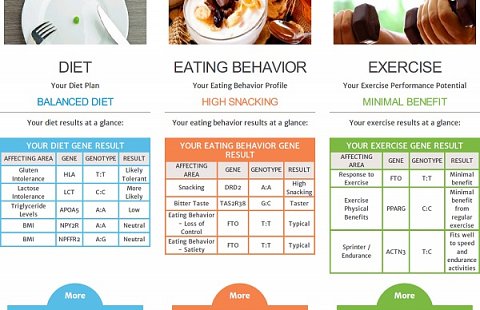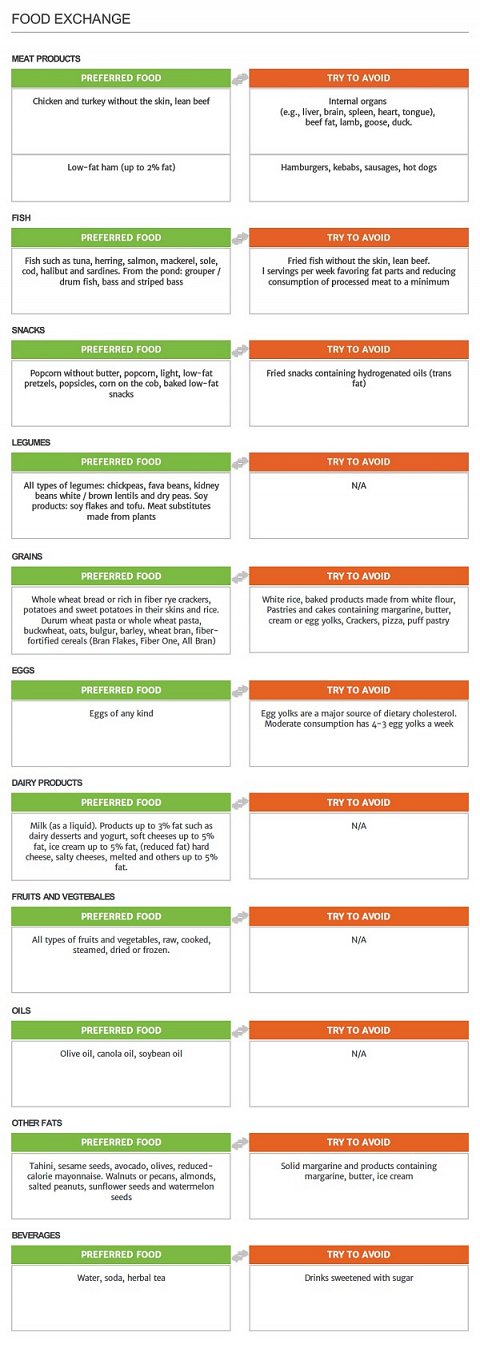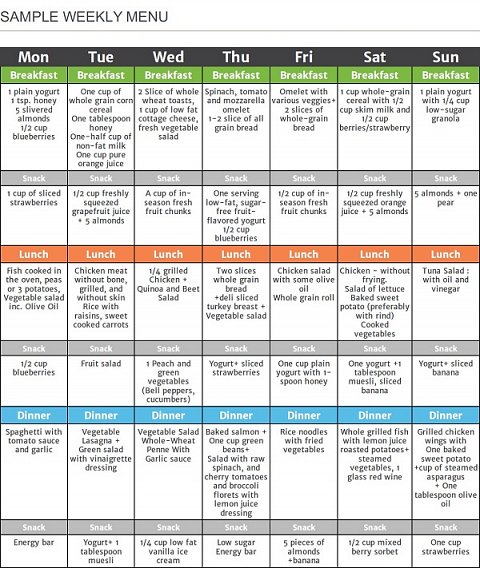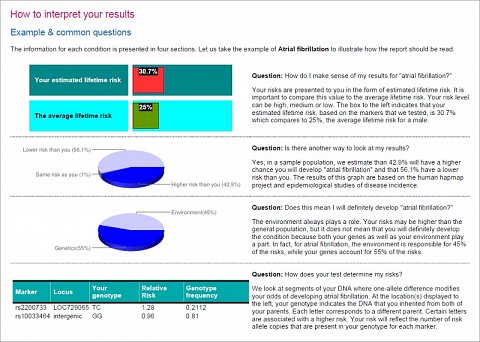At a Glance
Summary
The Diet and Nutrition DNA test from International Biosciences has really pushed me to consider my relationship with food, the diet choices I make, and has convinced me to make long-term changes.
At times I was disappointed that my DNA didn’t reflect my real life experience (e.g. the test predicted I’d be lactose intolerant which I’m not), as this caused me to put less stock in the recommendations. In addition, it wasn’t clear what most of the suggestions would do – would the advice help me lose weight, control my eating, or lower my risk of heart disease? I think I’d have valued the recommendations a little more if the benefit had been explicit.
There’s no doubt that this test contains valuable insights that I’m confident will help me stay healthy – time will tell if it’s value for money.
Full Review
International Biosciences have recently upgraded the genetic health tests they offer, one of which is the ‘Diet and Nutrition DNA Test’. We’ve been impressed with every International Biosciences health test we’ve taken so far so we couldn’t wait to try this one!
Product Expectations
International Biosciences’ website said this test would evaluate my food intake and give me the tools to tailor my diet to my DNA. Apparently I’d learn about my DNA’s effect on my weight, metabolism, eating habits and food intolerances. I read that the test would also recommend exercises according to my genetic profile.
Although it wasn’t explicitly stated, I felt the test was designed so that the results could be used to help me lose weight.
Ordering Experience
The website was easy to use and the ordering process was nice and simple. I received the kit within a few working days and had no problem taking samples with the cheek swabs and sending them back. The lab confirmed they’d received my samples a few days later.
The terms and conditions I had to sign were nice and simple, but it was disconcerting to read that by signing I was giving International Biosciences the right to keep my sample, conduct research with it, and that if a product was developed because of it, I wouldn’t receive any compensation.
The Results
Several weeks later I was emailed my results as a 19-page PDF document. The report was split into four sections: ‘Welcome’, ‘Diet Plan’, ‘Eating Behaviour’ and ‘Exercise Potential’.
Results Section: Welcome
The ‘Welcome’ section was short and sweet – I read that the report would tell me about the traits I’m likely to possess according to my DNA. I learned that non-genetic ‘environmental’ and ‘lifestyle’ factors (e.g. what I eat, what I drink) influence the traits I’m genetically predisposed to.
There were three fantastic summary tables (shown below) that gave me my results at a glance:

My Diet, Eating Behaviour and Exercise summaries.
Results Section: Diet Plan
According to the genetic variations I possess, International Biosciences recommend I have a ‘balanced diet’. I found this odd because shouldn’t everyone be eating a balanced diet? I was told my genetic makeup is ‘associated with’ a diet balanced in healthy fats, low glycemic index carbohydrates, protein and overall low calories. I didn’t understand what they meant by ‘associated with’ in this context, but I presume these are the components that should make up my diet.
The highlights of my diet gene analysis were:
• I don’t desire food more than normal and it should be possible for me to maintain a healthy diet
• I’m less likely to suffer with high triglyceride levels (I didn’t know why that was important)
• I’m less likely to lose control while eating, and more likely to have balanced eating behaviour
• I’m likely to be lactose intolerant
• I’m sensitive to bitter food and I might be eating too much salt to compensate
I thought these results were intriguing. I definitely have a poor relationship with food – I overeat when I’m stressed or bored – so it was interesting to see that my DNA isn’t responsible for my lack of control. In terms of the highlights associated to milk and salt; I regularly drink milk without issue, and consciously avoid salty foods, so these two findings didn’t ring true with me either.
The report went on to give me the characteristics of a balanced diet. I knew most of these already from school, government ads and TV shows, but there was one surprise; apparently I should eat three portions of fruit per day instead of five.
Healthy lifestyle habits to complement my balanced diet were also listed (e.g. daily physical activity), and there was an interesting point about ‘socialisation’. I read that cooking and eating with others at a table creates a sense of ‘togetherness’ when you eat, helping to maintain control and prevent overeating. This made a lot of sense to me, and I decided to make a conscious effort to eat on my own less often.
There was then a ‘Food Exchange’ section (shown below) which went through each type of food and recommended what I should try to include and avoid:

My Food Exchange recommendations.
A few of the stand-outs for me were that my DNA indicates I avoid sausages (my favourite food!), that I eat popcorn if I want to snack, that I avoid pastries and cakes, and that I avoid products containing butter! I have to say, I didn’t relish the prospect of identifying the foods in my diet that contain butter, in order to chop them out.
I noticed the Food Exchange recommendations for fish stated I should avoid ‘1 serving per week favouring fat parts’. I wasn’t sure if this was saying I should avoid fat on fish, or if I should include a weekly serving of fatty fish in my diet.
Just like my ‘balanced diet’ recommendation, I found the Food Exchange recommendations pretty broad – they didn’t seem particularly personalised to my genetic makeup.
At the end of the Diet Plan section I was given a ‘Sample Weekly Menu’ (shown below):

My Sample Weekly Menu.
I was really impressed with this menu. The recommendations sounded tasty, the meals are nice and simple, and the ingredients are easy to buy. It struck me that it’d be difficult to prepare some of the lunchtime meals as I can’t go home to ‘cook fish in the oven’, but I got a feel for the sorts of salads and sandwiches I could buy. It was also a surprise to see that four of the seven evening meals suggested were vegetarian – I like to eat red meat most evenings so transitioning to this plan would be quite a shock!
All in all, I found the menu to be very informative, and I was encouraged to try many of the meals and suggested snacks. However, the thought of completely adopting the diet was pretty overwhelming, and I envisaged adapting my current diet with a few suggestions from the menu instead.
Results Section: Eating Behaviour
I read that certain genes affect the foods we desire, our eating behaviour, whether we snack excessively, and if we have difficulty feeling full.
Broadly speaking, I was told my DNA indicates I shouldn’t have ‘loss of control’ eating episodes (which I do) and that I’m likely to have balanced eating behaviour (which I don’t).
I learned I’m genetically predisposed to eat foods that are high in sugar (which is true, I definitely have a sweet tooth), and that fruits, carrots and sweet potatoes would help me deal with sugar cravings. It was also recommended that I try to eat my snacks slowly, and that I should try to reduce their size. I was a little perplexed by some of this advice, not just because I find it obvious, but because I hadn’t provided my weight as part of the test – encouraging me to reduce portion size without knowing my weight seemed a little irresponsible.
For my genetically determined ‘reaction to foods’ I was told I was more sensitive to bitter flavours like coffee and chocolate. It’s hard to say if I’m sensitive to these flavours, but I know I eat a lot of chocolate and drink a lot of coffee!
The report said I was likely to be lactose intolerant and that this might lead to gastrointestinal symptoms such as bloating, cramps, nausea etc. There was lots of information on lactose intolerance and what I could do to mitigate the symptoms, but as I regularly drink milk without issue, I didn’t find the info meaningful.
Lastly, I was told that I’m likely tolerant to gluten which I believe to be true as I’ve never had any stomach problems.
Results Section: Exercise Potential
I was told my genetic makeup fits both speed and endurance activities, but I wasn’t sure if ‘fits’ meant I’d receive a health benefit from these activities, or if I should undertake them to lose weight. Whatever it meant, I definitely enjoy long-distance running and cycling.
I was also told I’d receive minimal benefit from regular exercise and I’ve definitely found this to be the case – dieting has a much bigger effect on my weight compared to exercise.
The report said I was likely to have a lower BMI than average (which isn’t the case) and that exercise would have little effect on changing my BMI (which is). The report touched on the health benefits of exercise, but I didn’t find the exercise recommendations very useful – the report simply said that my makeup ‘fits’ speed and endurance activities, and that I may be a sprinter or an endurance runner.
The Exercise Potential section finished with a description of the ‘sprinter gene’ (ACTN3) which makes a protein found in fast-twitch muscle fibres. Apparently, these fibres are important for generating explosive bursts of force. Although I found this info interesting, it wasn’t clear if I had a functional copy of this gene or not, which left me feeling a little frustrated – this would have made a good boast!
Summary
The Diet and Nutrition DNA test from International Biosciences has really pushed me to consider my relationship with food, the diet choices I make, and has convinced me to make long-term changes.
At times I was disappointed that my DNA didn’t reflect my real life experience (e.g. the test predicted I’d be lactose intolerant which I’m not), as this caused me to put less stock in the recommendations. In addition, it wasn’t clear what most of the suggestions would do – would the advice help me lose weight, control my eating, or lower my risk of heart disease? I think I’d have valued the recommendations a little more if the benefit had been explicit.
There’s no doubt that this test contains valuable insights that I’m confident will help me stay healthy – time will tell if it’s value for money.
Please note that we were invited to take this test free of charge.
See a description of this DNA test from International Biosciences >
At a Glance
Summary
In summary, I was very impressed with the genetic predisposition test from International Biosciences. I learned a great deal about myself and at all times the information was interpreted in a way that I felt comfortable with. I understood the limitations of the test right from the start, and I found the explanations to be excellent.
If I could suggest one improvement, it would be to include a reference to the studies that link a particular mutation to a disease – I think this would have improved my understanding of the results.
All things considered, I would highly recommend this test to someone who wanted to learn about their genetic predisposition to the 25 diseases listed.
Full Review
International Biosciences were offering a wide range of DNA tests - I took their genetic predisposition test to establish the likelihood that I would suffer with certain diseases later in life.
Product Expectations
I was told the test would determine my genetic predisposition to 25 conditions including cancers, cardiovascular conditions, diabetes and obesity. A sample report was provided so I could see exactly what I was ordering.
The website explained the test in detail, its limitations, and said that I may wish to consult my doctor before ordering. There was an FAQ section, and the implications of having a genetic predisposition to certain conditions were described. I was told that in some cases, the report may lead to an early diagnosis.
There was a medical glossary on the site, and another page displayed the terms and conditions of the test – International Biosciences clearly stated they do not provide medical advice, diagnosis or treatment.
Ordering Experience
The ordering process was a little strange – after clicking to buy the test I was initially sent to a paternity testing page! After finding the right page and adding the genetic predisposition test to the shopping cart, the checkout process was really clunky.
I received the kit within three working days - it contained a ‘finger prick tester’ so I could provide a drop of blood as a sample. Be warned, using the tester hurts a bit! Notes within the kit advised that the test may prove life-changing and I should prepare myself for the results. After sending off my sample I received confirmation of receipt the next day.
The Results
Just over three weeks later I received my results as a PDF file attached to an email – the document was 34 pages long.
The first section was titled ‘Before looking at your results’ and it briefly explained that the test is for genetic mutations in my DNA called SNPs (or Single Nucleotide Polymorphisms). I was told that only mutations inherited by at least 1% of the population are reported on, and I was advised that the report does not replace a medical professional. It was explained that at times my ethnicity would be relevant and the report would indicate when.
A second section explained how I should interpret the report (shown the below) which was very thorough. At all times I felt International Biosciences were really making an effort to help me understand what my results actually meant.

The section explaining how to interpret the report.
Results Section: Summary of your results
After this my results were summarised. I was shown to have a high genetic risk for atrial fibrillation ( 30.7% compared to the average 25%), Graves’ disease ( 6.1% compared to the average 1%), lupus ( 0.9% compared to the average 0.25%), psoriasis ( 80% compared to the average 11.4%) and type 2 diabetes ( 72% compared to the average 24%). My high risks are shown below.

The conditions I have a high genetic risk level for.
I have to admit that I didn't know what most of these conditions were and so had to look them up. It was interesting that I was given a high risk for psoriasis as I’d suffered with this when I was younger. My predisposition to type 2 diabetes is definitely a concern, so I've decided to try exercising more often - I’ve read that maintaining a healthy weight can reduce the risk of suffering with diabetes later in life.
It was surprising that for some conditions, even though my genetic risk was higher than average, the risk itself was still tiny. For example, a 0.9% genetic risk of lupus may be higher than average but it doesn’t sound like a risk I should be worried about.
The summary also listed ten conditions that I had a medium genetic risk of suffering with, shown below.

The conditions I have a medium genetic risk level for.
Another ten conditions were listed where my risk was low (shown below). For the low genetic risks, I noticed Alzheimer’s disease was listed (a 3.3% risk compared to the average 6%) which was a massive relief as this runs in my family.

The conditions I have a low genetic risk level for.
Results Section: Condition details
After this, the report devoted a page to each of the 25 diseases, explaining what they were and who tended to suffer with them. One table showed my estimated lifetime risk vs. the average lifetime risk for each disease, another listed the genetic markers in my DNA that were associated with it.
A pie chart for each disease showed what proportion of the population had a higher, equal, or lower chance of suffering with it compared to me. Another pie chart showed what proportion of the risk for each disease was environmental vs. genetic, which really put the results into context for me.
The page devoted to my Alzheimer's results is shown below.

The page devoted to my Alzheimer's results.
Summary
In summary, I was very impressed with the genetic predisposition test from International Biosciences. I learned a great deal about myself and at all times the information was interpreted in a way that I felt comfortable with. I understood the limitations of the test right from the start, and I found the explanations to be excellent.
If I could suggest one improvement, it would be to include a reference to the studies that link a particular mutation to a disease – I think this would have improved my understanding of the results.
All things considered, I would highly recommend this test to someone who wanted to learn about their genetic predisposition to the 25 diseases listed.
See a description of this DNA test from International Biosciences >


